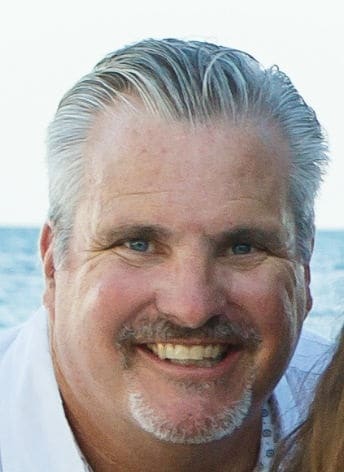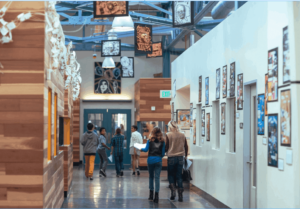Project-Based Learning Revolution: Principal’s New Book is a Call to Action

2020 will be remembered for many significant cultural, political, economic, and global challenges. All of these are overwhelming, but also represent opportunities for collective calls to action. In that spirit, one high school principal is reaching out to his colleagues to join the Project-Based Learning Revolution.
In his book A PBL Revolution: Join the Movement to Transform Education One School at a Time Through Project-Based Learning, Dr. Daniel Ching is challenging both teachers and leaders to transform their classrooms and schools to truly meet the needs of today’s ever-changing learners. Beyond pedagogy, Ching focuses on establishing the culture necessary to make this deeper learning transformation. Ching said this culture of learning is centered on inquiry, creativity, collaboration, and rigor through project-based learning.
“This book highlights the fact that true project-based learning starts at our core and requires us to transform our thinking and instruction from the ground up,” said Ching. “The book is a guide to implement PBL into the fabric of our schools rather than by fitting projects into a unit or occasionally using PBL when we have time in the pacing guide.”
The Why
The inspiration, according to Ching, is from his personal experience as a teacher and now principal at Minarets High School / Minarets Charter High School. His PBL journey represents over 10 years now of implementing a program based on research, risk-taking, trial, error, and real-time adult learning.
“It was inspired by the wonderful experience we have had in making real connections with students through hands-on, meaningful projects,” said Ching.
Ching was also inspired by researching some of the highest performing PBL schools in the nation. There, he interacted with school leaders who impacted his thinking. He soon realized that many educators talk about PBL, but very few put together the school-wide program to make it a reality.
“That is what this book is all about,” said Ching. “And hopefully, it is just the beginning of the process to make that change.”
The Call to Action
PBL has become too much of a catchphrase, according to Ching. He said it’s still competing in a world of canned curriculum and instruction where even our recent adoption of new standards haven’t moved deeper learning forward. Chings wants to challenge his peers to see through the smokescreen and operate from a perspective that PBL is an incredibly powerful instructional approach.
“Authentic and transformational project-based learning cannot be pre-packaged. Rather, it’s really more of a mindset that we have to design our classes to give students an entirely different learning experience,” said Ching. “Let’s do this together and push back against the watering down of curriculum and instruction.”
The Takeaways
Like other thought leaders, Ching sees urgency. He sees that the pandemic, and the necessary adjustment to it by schools across the nation, is already forcing some of that change. However, Ching demands that more schools share their stories and inspire the teachers and principals to embrace the change.
“We need district leaders to embrace the collaborative effort with their principals and teachers to pursue the change. Most people just want to see examples of how it has been successful in other schools,” said Ching. “This is part of my quest – to spread the word that this can be done in a research-based, comprehensive, effective, and replicable way.”
Another challenge is the rate of change. Ching says many naturally want change to happen quickly, or even more importantly, smoothly. However, he says this type of change is going to take a culture shift, as well as willingness to let go of things we have had control over for too long. That is why Ching thinks this revolution won’t be an immediate systemic change, but rather teacher, school, and district at a time.
“The beauty in that challenge is that it takes a staff to come together, build a structure that works for their community, and own the learning,” said Ching. “This is our chance to do that.”
Like other change agents, Ching continually brings everything back to the ground level – the students. He said each passing year, many educators can see more and more students disengaged. And this is not because they don’t want to learn, according to Ching, but because they are not being challenged.
“We are realizing that textbooks and licenses that over-promise are just not effective,” said Ching. “It is truly sad to see technology used to make the modern ‘worksheet.’ We all know, including the students, that we can do better – much better.”
He said the true reflection of a PBL school will be evidenced in the language the students use every day. Students engaged in meaningful project-based work will talk about the research they’re doing, problems they are addressing, decisions they are making and the feedback they are receiving.
“PBL has to be built into the fabric of the school. It’s infectious, organic, and real,” said Ching. “You will see it in rallies, games, and at lunch. It permeates every aspect of the school.”
The Culmination
Ultimately, Ching sees this book as an effort to be the DIY manual for teachers and leaders – sort of a hard knocks version of PBL books. This is a complex, but beautiful and continuous process, according to Ching. He says the book is a reflective journey that also tries to add the research and credibility, as well as the how-to.
“There are so many walls in education that prevent us from getting to where we want to go and need to go with our students,” said Ching. “I hope this book can provide the tools to begin that journey and inspire others to do the same.”
For his continued journey, Ching said he would really like to continue to network and collaborate with other like-minded schools.
“I am always looking to help others implement PBL and I am definitely always wanting to use their experience as an opportunity to learn myself,” said Ching.
For more, see:
- Why PBL Can’t-Wait
- Getting Clearer: HQPBL As An Equity Imperative
- How to Create & Cultivate a PBL Culture
Stay in-the-know with innovations in learning by signing up for the weekly Smart Update.






Cori Irvin
Thanks for sharing the book by Dr. Ching. PBL is something that I have always aspired to use within my classroom, but have never figured out a way. I am looking forward to reading this book and using the Getting Smart blog for more ideas on how to implement PBL within my classroom.